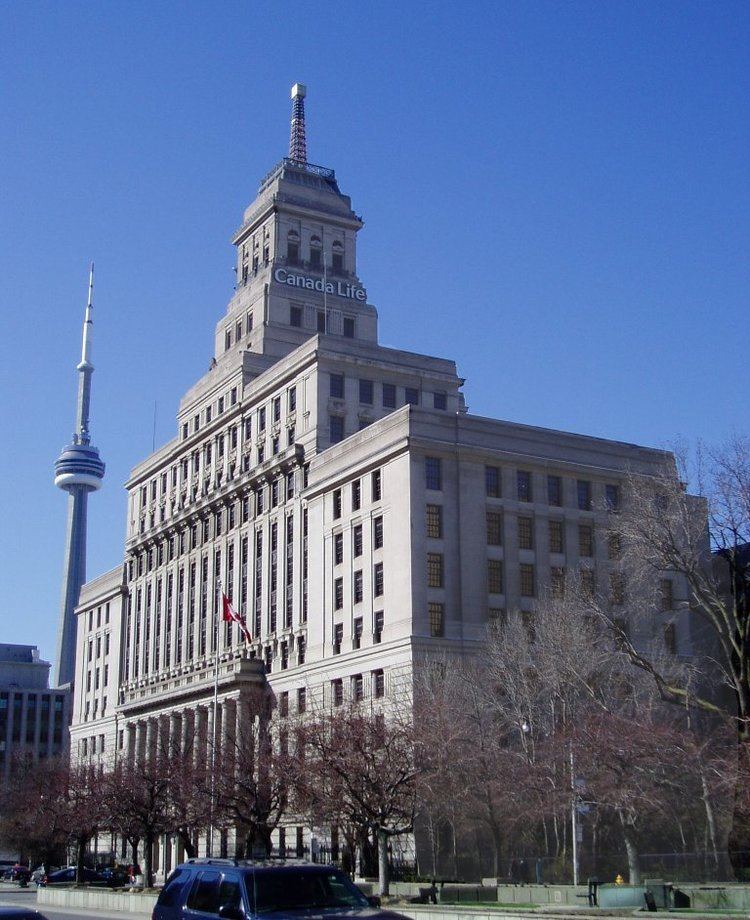Type Office building Antenna spire 321 feet (97.8 m) Floor count 15 Height 87 m Opened 1931 | Completed 1931 Roof 285 feet (87 m) Floors 15 Architectural style Beaux-Arts architecture Construction started 1929 | |
 | ||
Similar Osgoode Hall, Campbell House, St Lawrence Hall, Commerce Court, Old City Hall | ||
Tltv ep 102 the canada life building
The Canada Life Building is a historic office building in Toronto, Ontario, Canada. The fifteen-floor Beaux Arts building was built by Sproatt & Rolph and stands at 285 feet (87 m), 321 feet (97.8 m) including its weather beacon.
Contents
It is located at University and Queen Street in the city's downtown. Work on the new headquarters of the Canada Life Assurance Company began in 1929 and it opened in 1931. It was the fourth building to serve as the headquarters of Canada Life, Canada's oldest, and at the time largest, insurance company. Previously it had been housed in offices at Bay and King Street.
The Beaux Arts structure was the first of a series of planned structures along University Avenue, but the Great Depression halted these plans. When it was completed it was one of the tallest buildings in Toronto. It remains one of the largest office buildings in Toronto with windows that can be opened by its occupants.
Weather beacon
The building is perhaps best known for its weather beacon, whose colour codes provide summarized weather forecasts at a glance. The information is updated four times every day by Environment Canada's Weather Centre at Toronto Pearson International Airport. The top light shows:
The white lights along the support tower show:
The beacon was the first of its kind to appear in Canada and was built at a cost of $25,000. The top of the beacon tower stands 321 feet (97.8 m) above University Avenue and, when completed on August 9, 1951, made the structure the third-highest in Toronto, after the Canadian Bank of Commerce Building and the Royal York Hotel.
Canada Life Tower
Canada Life Tower is an addition to the building, built directly west of the original. It connects to the original building through an enclosed, elevated walkway; it totals 16 floors and was designed by Kuwabara Payne McKenna. It was completed in 2005.
